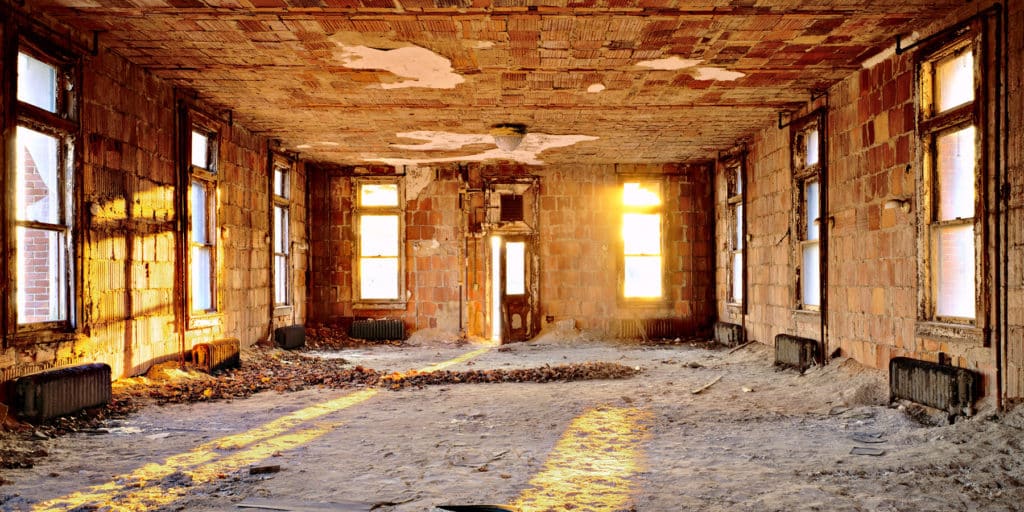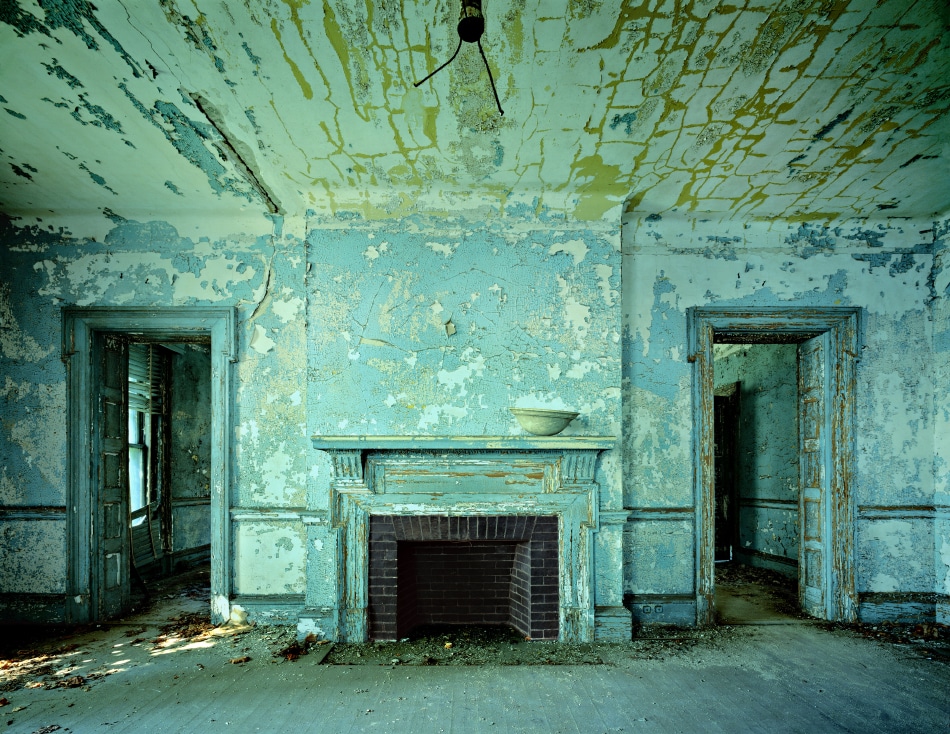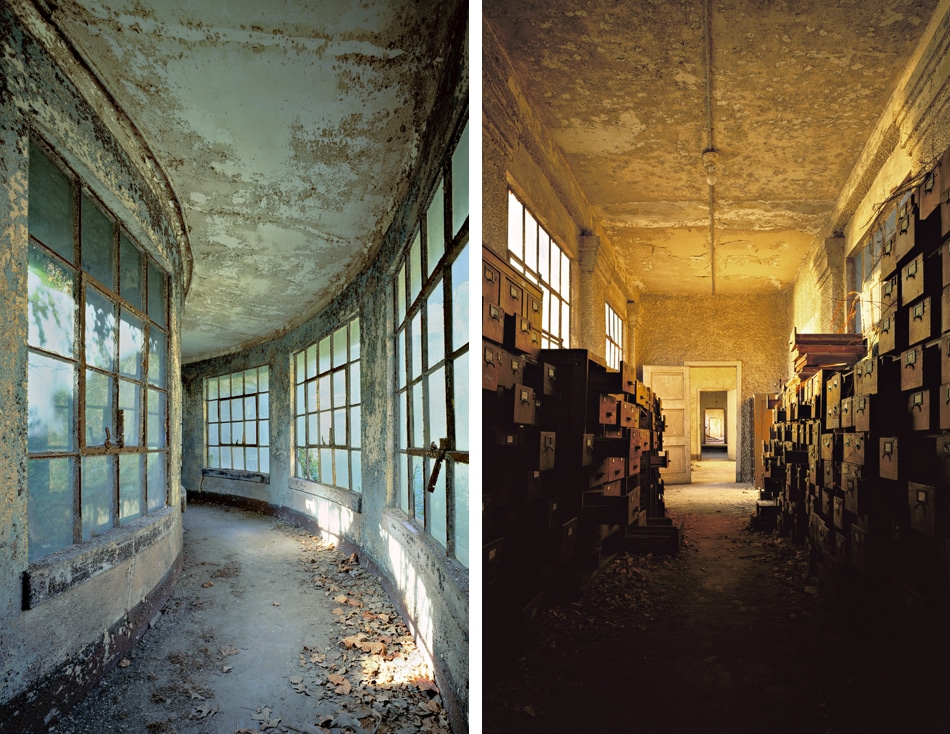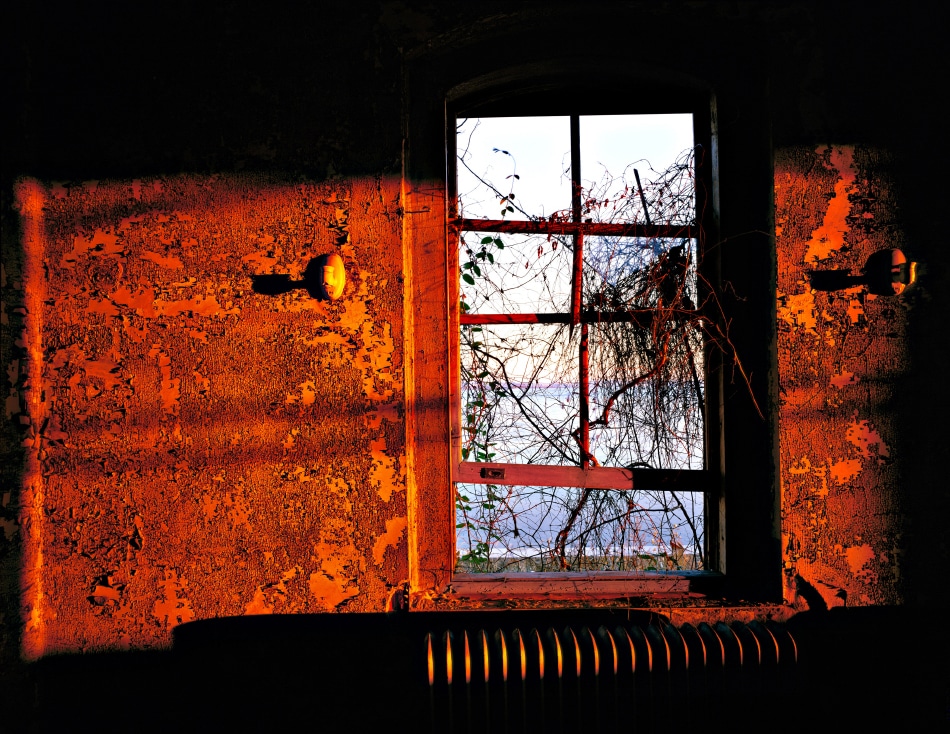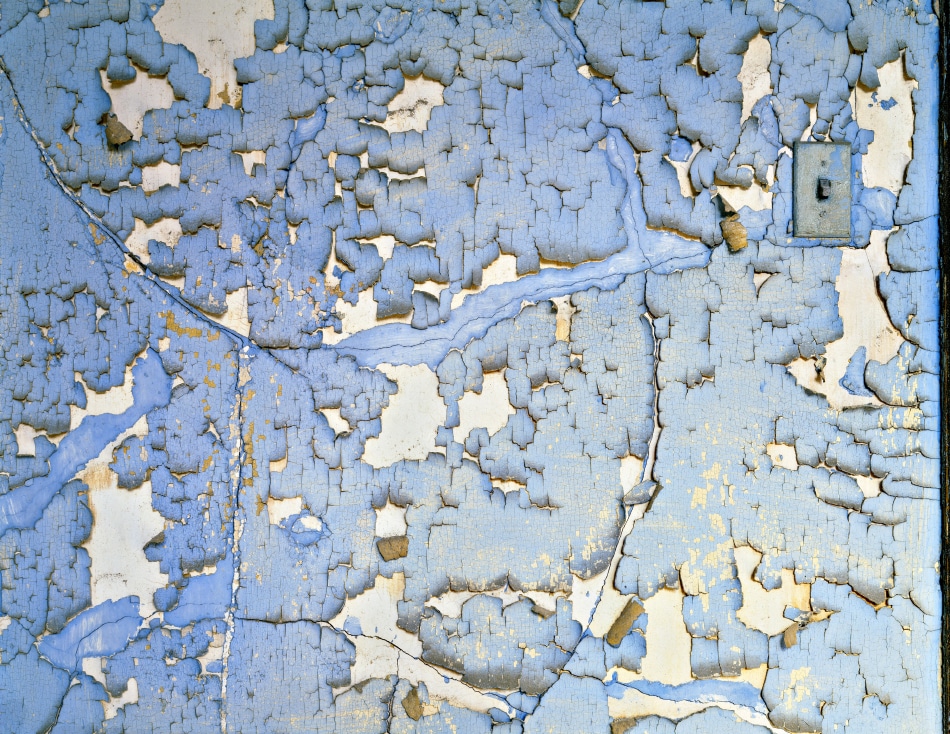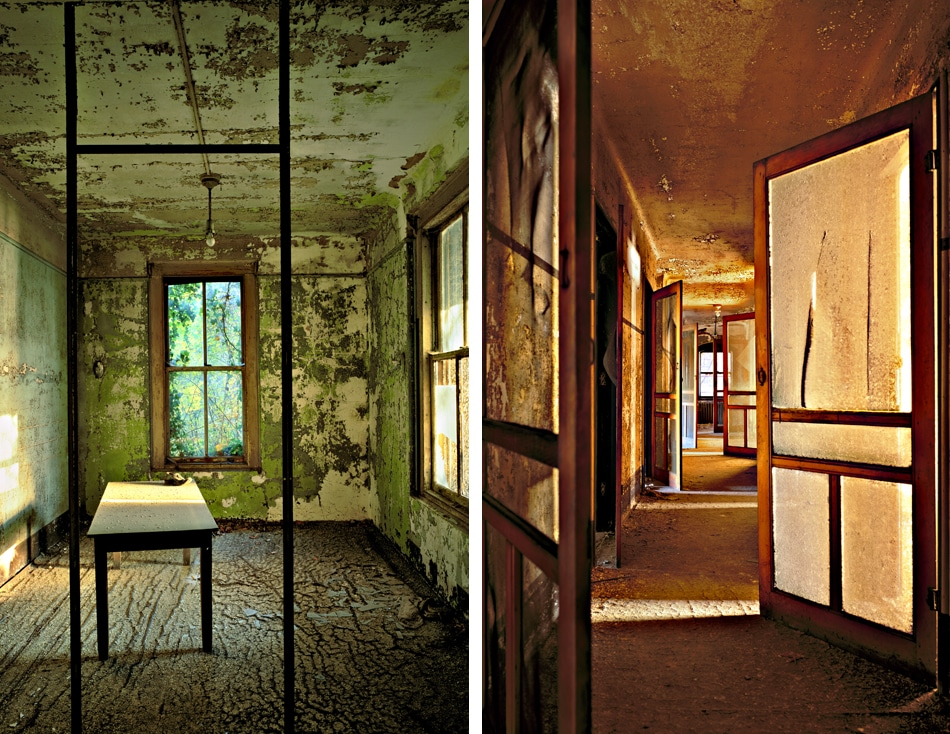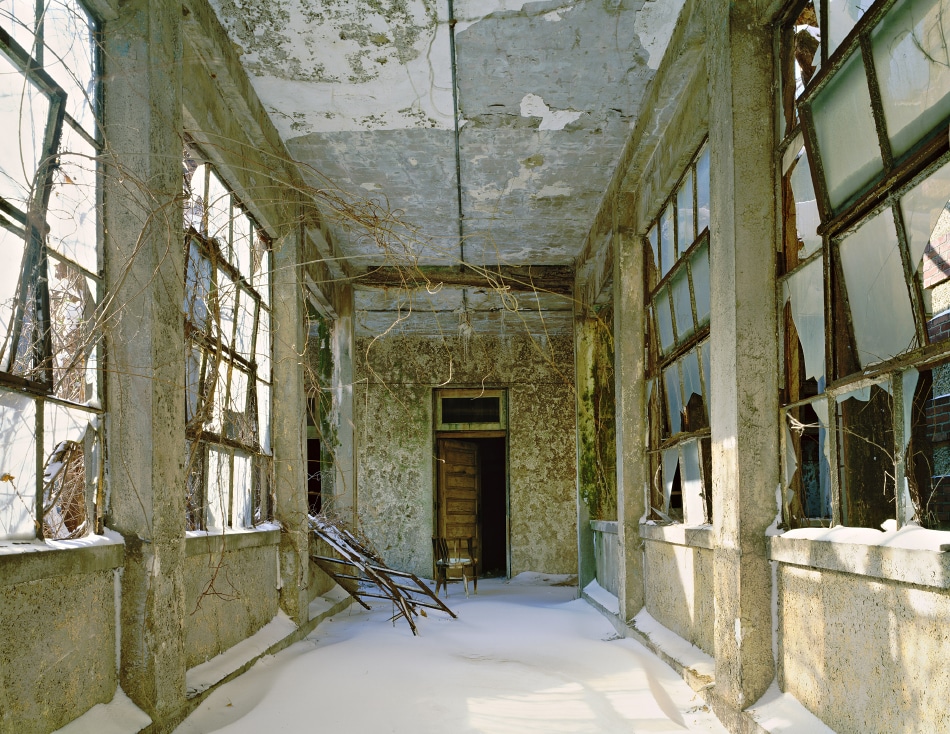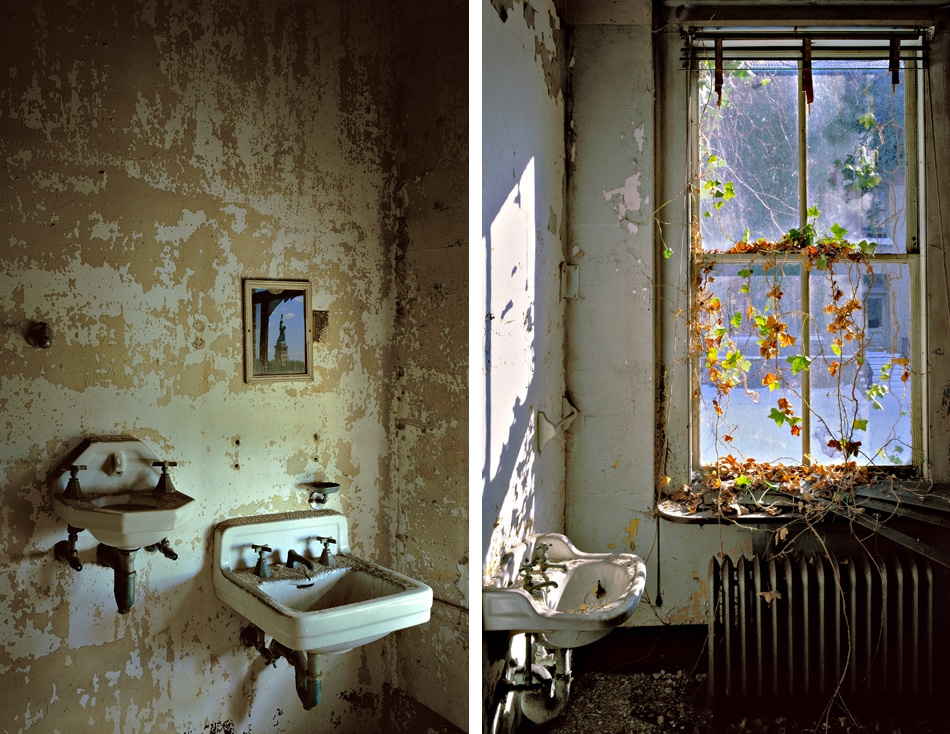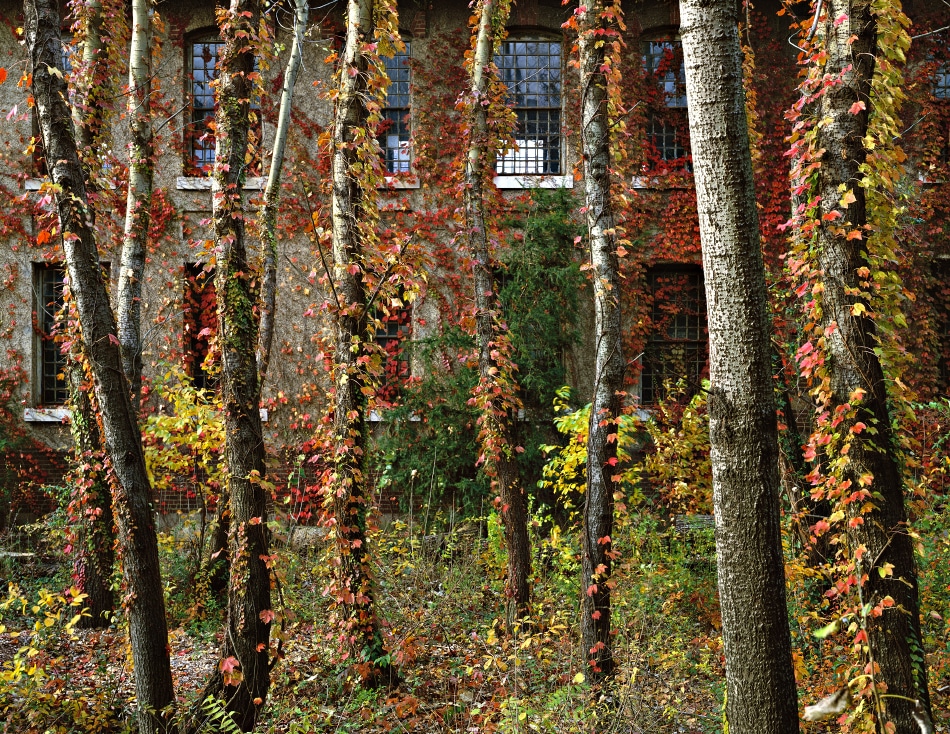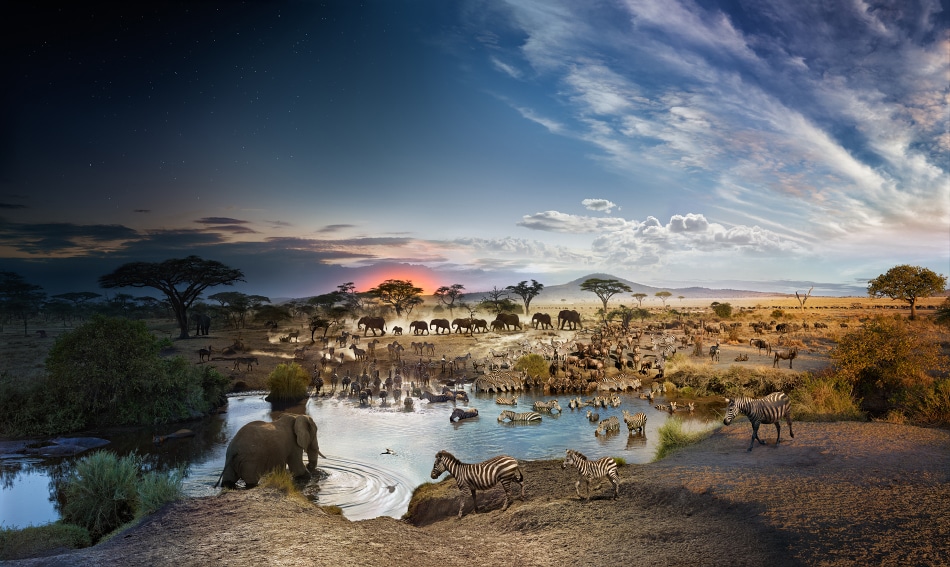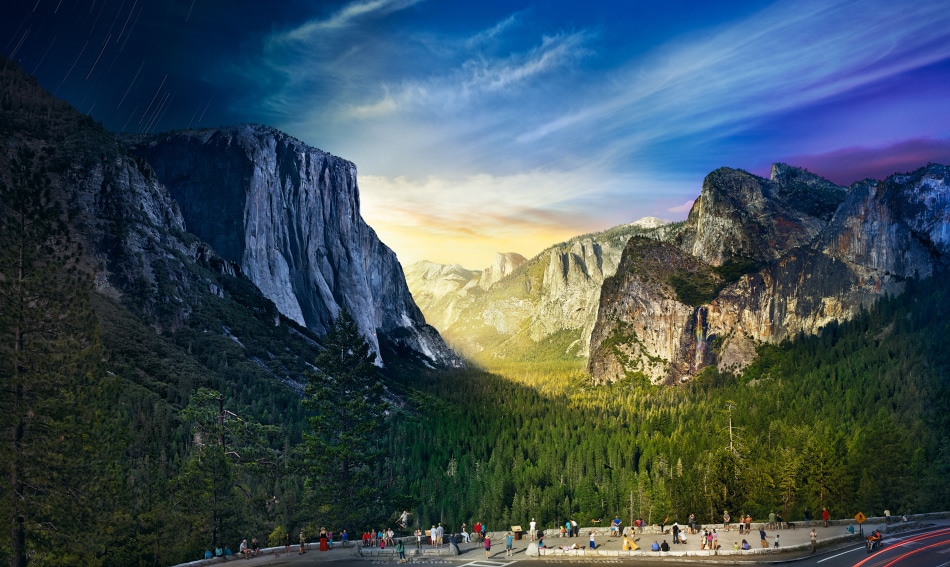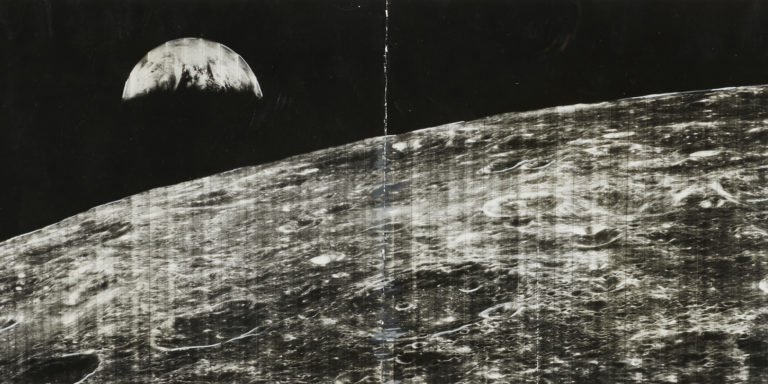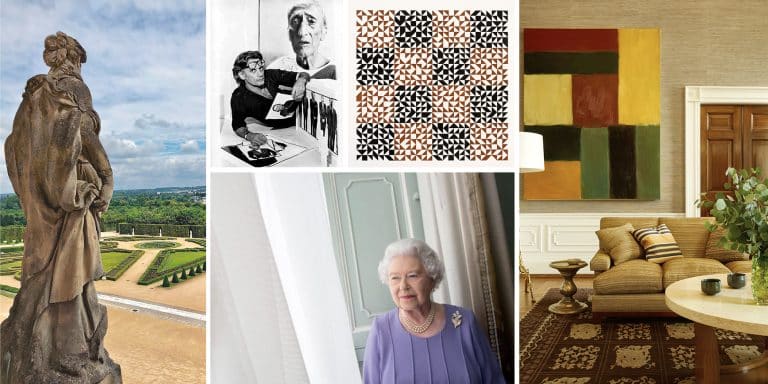
April 24, 2017Stephen Wilkes first photographed Ellis Island on assignment in 1998, and then spent the next five years shooting it whenever he had a free moment. His images from this time, “Ellis Island: Ghosts of Freedom,” are now on view at Peter Fetterman Gallery (portrait by Greg Gorman). Top: Hospital Extension, Women’s Ward, Island 2 Ellis Island, 1998–2003. All photos by Stephen Wilkes
These days, talk of migrants conjures images of Syrian refugees packed perilously aboard inflatable rafts, Central Americans trekking toward our southwestern border and, most recently, would-be newcomers from seven predominantly Muslim nations being detained, visas in hand, at our airports. But there was a time in our nation’s not-so-distant past that immigration was inextricably linked to one tiny piece of land in the Hudson River, just off Manhattan’s shores. Astoundingly, up to 40 percent of American citizens descend from at least one of the 12 million immigrants who entered the United States there, at Ellis Island.
Memorializing that hallowed ground became a five-year passion project for photographer Stephen Wilkes, whose series “Ellis Island: Ghosts of Freedom” is on view at Peter Fetterman Gallery, in Santa Monica, California, through May 27. Photographed in natural light, the series is a haunting study of a singularly American place: the hospital complex where would-be immigrants suspected of carrying infectious diseases or being mentally ill were quarantined. In one shot, a haphazard pile of wooden chairs suggests the tired, impoverished patients who once sat in them; in another, an iron bed still holds a mattress, sunken from age and use. Some images, such as a wild garden thriving in an interior hall, are almost surreal; others, whether close-up grids of tiles and bricks or the mottled, painterly patina of decaying walls in rich reds and faded blues, look like abstract canvases. Occasionally, the Statue of Liberty is visible, temptingly close yet, for those denied entry, tormentingly out of reach.
“With what’s going on in our world and immigration becoming the single hot-button issue of our nation, I wanted to show ‘Ellis,’ ” Wilkes said over a recent lunch in midtown Manhattan. “The subtext is, we are a nation of immigrants. Why people emote universally to these photographs is that we are all immigrants. No one can escape that. Without that, we don’t have a country. We don’t have a fabric. There’s a thread of every immigrant in all of us.”

Corridor #9, Ellis Island, 1998–2003
For Wilkes, the story of Ellis Island is deeply personal.His mother arrived there in 1939 from Vienna, Austria, having escaped the Nazi Anschluss. She was nine years old and alone. “My grandmother was a seamstress, and she made a teddy bear,” Wilkes says. “My mother didn’t speak a word of English and carried the teddy bear, by herself, across the Atlantic to Ellis Island. When she got there, my aunt was supposed to pick her up. She didn’t get the telex in time, so my mother sat for four hours, unable to communicate, holding this teddy bear, knowing she had the family jewels in it, all the bonds, everything.”
Wilkes first went to Ellis Island in 1998 on assignment for Encyclopaedia Britannica to photograph the south side of the island, where the hospital wards stood as the final barrier to the promise of a new life. Children could be separated from their mothers, husbands from wives. Unlike the Great Hall, which had been renovated in the 1980s and was already an important tourist attraction, the hospital was off-limits to the public. Left to quietly deteriorate, it had vegetation creeping in through the windows and floors, lead paint peeling from the walls and debris scattered across the floors. The weight of history was palpable. Wilkes was given one hour to shoot.
After finishing the assignment, he found himself returning to Ellis Island from his Connecticut base “every free moment,” he says. “I became infected by the beauty, the sense of humanity in the rooms, the light. I couldn’t get enough of the place.” Wilkes’s wife, he adds, joked that he was turning into Richard Dreyfuss’s obsessed character in Close Encounters of the Third Kind. “I would have shot it for twenty years. To me, it was a living ruin. It would change based on seasons, the weather, snow, whatever. It was always evolving, like a living sculpture. In a really strange way, I felt like I was chosen to document it.”

Stephen Wilkes’s “Ellis Island: Ghosts of Freedom” is on view at Peter Fetterman Gallery, in Santa Monica, California, through May 27.
Eventually, he teamed with the New York Landmark Conservancy to make a video about the complex that helped convince Congress to spend $6 million to shore up the 29 crumbling structures. Work was completed in 2006. In retrospect, Wilkes is wistful about the undertaking, which resulted in an extensive renovation. “In my hope to save it, it really changed it forever,” he says. “I never realized how far they were going to go. Sometimes stabilizing something becomes sterilizing it. There was history on those walls, there was history in the paint, there was history in that light. Suddenly the light, the spirit of the place, changed. That was very difficult for me to see. The building was my muse.”
Although the roughly 75 images of “Ellis Island” forged Wilkes’s reputation as a photographer who could seamlessly merge documentary photography with fine art, he is probably most famous for his ongoing “Day to Night” series. The subjects are iconic — New York’s Times Square, Yosemite’s Old Faithful, the Western Wall in Jerusalem, gondolas on a Venetian canal — but Wilkes has managed to capture the passage of time against each backdrop in a manner that is 180 degrees from today’s I-was-here Instagram culture. “Why does a still photograph have to be only a single moment?” he asks. As the series title suggests, each photograph depicts the scene over a 24-hour period. Wilkes does not use time-lapse photography, instead shooting more than a thousand frames from a fixed position and then spending months digitally piecing together his final composition. The result is a sprawling narrative of a place from daybreak to nightfall.
“My work with Ellis was always about time, memory and history, and I feel that had I not done Ellis, I never could have done ‘Day to Night,’ ” Wilkes says. “The root of ‘Day to Night’ is time, memory and history.”
It was the advent of high-quality digital photography that enabled him to execute that series. The technological aspect of photography has always appealed to Wilkes. Growing up on Long Island, he planned to become a scientist like his father, who was a flavor chemist. (You may thank him for Dr. Brown’s black cherry soda and Häagen Dazs’s coffee ice cream.) Then the young Wilkes acquired a camera. At about 12 years old he took a scientific-photography class in which he did things like shoot specimens through a microscope, and he was hooked. “My drive to innovate comes from that part of my mind,” he says.
At the same time, he notes, “creativity was very much a part of our family life.” His mother was an opera singer, and his identical twin brother, now a businessman, was an accomplished painter. “He had the patience to sit for hours,” Wilkes says. “The big joke in the house was, my brother would work on a painting for a year, and I would walk in and go, ‘Would you please put the clouds in already? I want to see what it looks like.’ I was always impatient. When I got a camera, it was the perfect medium for me because I could see things immediately.”
“I became infected by the beauty, the sense of humanity in the rooms, the light. … In a really strange way, I felt like I was chosen to document it.”
Wilkes was also drawn to photography’s potential for portraying the human condition. He recalls the first time he saw Pieter Bruegel the Elder’s The Harvesters (1565), on a field trip to the Metropolitan Museum of Art when he was 14 or 15. “Literally, my mouth dropped because I’d never seen a landscape painted that way. Of course, that painting redefined landscape painting,” he says. “I saw these farmers who were only this big” — he pinches his index finger and thumb close together — “but I could almost feel the sweat coming off their brow. I felt this incredible emotional connection. That had a profound effect on me — that you could create a narrative at such small scale.”
It’s an approach he emulated with “Day to Night.” The images, shot from an elevated vantage point like a cherry picker, a cliff or a bird blind, pick up scores of mini dramas below: brides posing in Central Park, tourists climbing the steps to Sacré-Coeur. Wilkes brings along an assistant and a little coffee maker but relies mostly on adrenaline to keep going. “It’s the power of observation,” he says. “When I’m there, I’m just looking and looking. It becomes almost a meditative study of a place. There’s a certain fear that drives me — I’m afraid that if I take a half-hour nap, I’ll miss the whale or whatever.”
A viewer’s first reaction upon seeing a “Day to Night” image is most likely wonder, even awe, at the technical feat and the emotional heft. Many of the works in the series, though, carry a political subtext. Serengeti National Park, Tanzania (2015), for instance, is not merely a picture of a biblical-feeling landscape populated by majestic African animals but a consideration of a scarce resource — a watering hole — being shared by many species, including highly endangered elephants. Likewise, it’s hard to separate Wilkes’s photograph of the crowds lining the Washington Mall on the day of a presidential inauguration from the fact that it’s President Obama’s face we see on the giant video screens.
“I do think there’s a way to inform that doesn’t offend,” says Wilkes, who notes that it’s easy for viewers to simply turn away from images that are hard to look at, whether of oil spills or war. “I want to touch you emotionally with beauty. I just think there’s more power in beauty than there is in darkness.”

Santa Monica, Day to Night, 2012
Eight years into “Day to Night,” Wilkes foresees an end to the series (although not before he completes a global commission for National Geographic using the methodology). Whatever follows, he says, will necessarily have the same potential to mimic how the human eye sees and to expand the idea of what a photograph can be. It will also need to have profound effect on his own perception, as “Ellis Island” did.
After several eerie encounters there — including one when both he and his assistant were certain they saw a little girl wearing a turn-of-the-century nightgown in what they later learned had been a children’s measles ward — Wilkes opened his mind to new possibilities. “I wasn’t a ghost guy before this experience, but I began to understand there was some other energy in these rooms that I was somehow feeling,” he says. He points to the LIGO Project, a global astrophysics research initiative that has detected gravitational waves made by the collision of two black holes more than a billion years ago. “When we can record something like that, why is it so farfetched that, if I walk into a room in late October and the sun is shining as it shone in 1939, that somehow, in that beam of light, part of that history becomes active again? That’s what I felt — I felt there was history in the light.”
And in history he has found his calling. “At the core,” he says, “I’m a storyteller.”
Visit Peter Fetterman Gallery on 1stdibs
